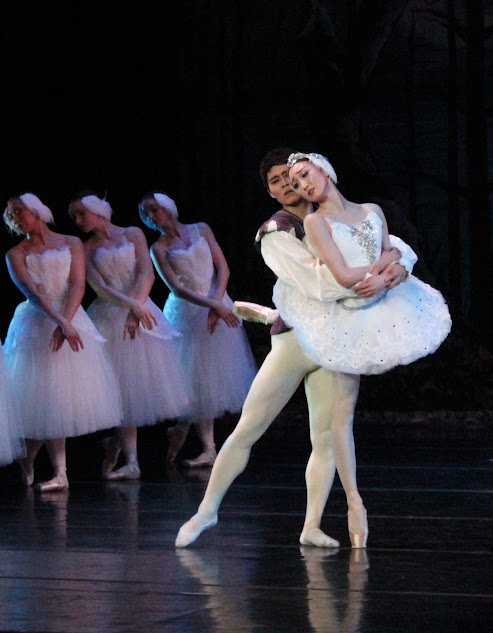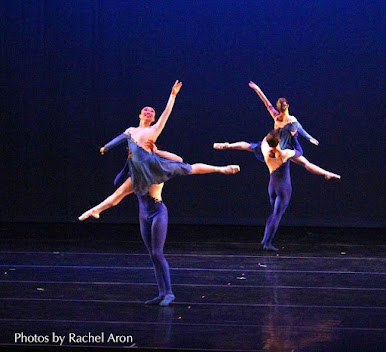A Lake of Swans and a Shaky Start
I came across an interesting passage this morning – excerpted from a ballet magazine, circa 1952. The author was editorializing what was then the 75th anniversary of Swan Lake. Yes, for those keeping track, that currently makes the world’s most famous ballet 133 years old. I have to say, it takes good care of itself, and doesn’t look a day over 110.
Now, the article in question, written by dance critic and historian Anatole Chujoy, was interesting in that it filled in some gaps in my understanding of Swan Lake’s legacy. Over the last few years, as I have produced our podcast, I have absorbed a lot of dance history from the back-and-forth discussions between Jim (Sparrow) and Karen (Gibbons-Brown). I have heard Karen say a number of times now that both Swan Lake and Nutcracker, despite Tchaikovsky’s success as a composer and Petipa’s renown as a choreographer, initially flopped. As it turns out, both had their reasons, and both had their own unique path to requited glory.
I won’t say much of Nutcracker just now. As busy as we were with our own production this past December, I didn’t have time to put anything to pen. I will do my best to remedy that in the 2023 holiday season. I will just say that both composer and choreographer were dealing with personal issues at the time, and apparently Russian audiences in 1892 did not care for the excessive use of children in theatre. Eventually, it was we, Americans, who discovered Nutcracker and ran with it. Whether or not it really is Tchaikovsky’s worst ballet can be debated by wiser and/or snobbier aficionados than me. I’m with the rest of America: It’s a beautiful addition to the holidays.
What interested me from Chujoy’s article was his explanation that Swan Lake’s initial failure was due to colossal ineptitude on the part of the choreographer – not Petipa, nor his assistant Ivanov, who is co-credited with creating the iconic version of the ballet. The choreographer for the original Bolshoi Theatre production was Julius Reisinger, who Chujoy amusingly distinguishes as being a hack, stating that he “possessed neither the talent nor the taste to choreograph a work to the music of a major composer.” Critics can be harsh. Even 75 years later.
Also telling was the star ballerina, who by account wasn’t really star material, and somewhat past her prime. She insisted on pulling out chunks of Tchaikovsky’s music and replacing them with tired old passages she already knew. I admit I find myself imagining a production of Les Misérables where Marius serenades Cosette with a rendition of “Surry with the Fringe on Top.” (Rogers & Hammerstein have no place in the French Revolution, by the way.) At any rate, Tchaikovsky himself was thoroughly embarrassed at the mishandling of his work. It wasn’t until after his death that Petipa restaged Swan Lake in the fashion we know and love today. It featured the celebrated ballerina Pierina Legnani, and this version was an instant hit and has never left the stage in over a hundred years.
This renovation yielded some other interesting stories. Though Marius Petipa was perhaps the most renowned choreographer in history, acts II & IV are credited to his assistant, Lev Ivanov. And those acts contained some revolutionary concepts in choreography. For instance, until this time, the lead always danced alone, while the rest of the ensemble became little more than living scenery. In Swan Lake, that living scenery was definitely on the move, making the dance a much more complex entity, if perhaps stealing the protagonist’s thunder just a bit. It may seem like a small thing now, but it was years ahead of its time. As a result, historically, Ivanov has stepped out of Petipa’s shadow as an innovator in modern ballet.
That’s just a little bit of history that I found interesting. If you’ve listened to our recent podcast miniseries, you’ll know we’ve been talking about romantic and classical era ballets in general, and Swan Lake specifically. You’ll also be aware that we (Fort Wayne Ballet) are staging Swan Lake this weekend. As of this blog’s publication, tonight is opening night and you really should hop on ArtsTix.org and grab some tickets. Our dancers have trained hard, and they will be gracing the stage to the Fort Wayne Philharmonic’s live performance of Tchaikovsky’s masterpiece.
This will be our last classical ballet of the season. I know that not everyone shares my love of sweeping symphonic scores and the fine arts at its most grandiose, but Tchaikovsky is relatively easy to lose yourself in. He is one of those composers that make me think of film scores – which fits, as the music is meant to drive the plot every bit as much as the characters. Plays and ballets are the ancient precursors to film and television, after all. Like a good film score, the music leads the audience – teasing what’s to come and pushing you along to the conclusion. The story is also compelling, with an enchanted princess, an evil sorcerer, and a bittersweet ending to boot.
Classical performances may not be your thing, per say, but I defy you to find this show drab or boring. I’ll go further in saying that if you’ve never attended a live ballet, you can’t know what a life-experience you are missing. I hope that if you’re taking the time to read my little blog and haven’t been to a show yet, you’ve at least had your curiosity piqued. And if the classical scene isn’t for you, look out for next month’s blog, where we will explore some very interesting modern themes in preparation for our May tribute to Edward Stierle.
Ballet 101 – Exploring the terminology.
I thought I would put a little feature in these blogs, wherein I explain a few choice bits of terminology for all of us who aren’t dancers and would like to sound a bit less like a complete novice. Some of these are, I’ll admit, things I looked up during my research for this blog. Most ballet terminology, incidentally, is French in origin – ooh la la. Ready to have your headspace widened? Here we go.
variations
When you hear discussion on individual dancers’ roles, the word variation comes up a lot. To put it simply, a variation is a solo dance, often a significant and iconic one, given to a lead. It is called a variation because it is often subjected to a certain degree of customization and personalization from the dancer, based on artistic choice and the dancer’s specific abilities.
pas de deux, pas de trois
Dance for two, dance for three. Couldn’t be simpler.
Here are a couple of movement terms for you:
arabesque
A held pose, in which the dancer balances with one leg and arm elevated behind her, the other arm in front. It’s a move you’ll see a lot in romantic and classical ballets. It also refers to a decorative pattern used in Middle Eastern architecture, but that probably isn’t helpful.
pirouette
Spinning on one foot, usually with the raised foot touching the knee of the supporting leg.
fouetté
Whipping the leg around quickly during a spin. (In my younger days, I did some kickboxing. A fouetté is the prettiest version of a roundhouse I’ve ever seen).
As always, I hope we’ve learned a few things together with this edition of the blog, and I do hope you will check out our latest series of podcasts, which can be found below. And before it’s too late, grab some tickets and join us for Swan Lake, March 24, 25, & 26 at the Arts United Center here in Fort Wayne. You can purchase tickets right here:
Take Care, and don’t ever be afraid to expand your horizons.
Principal Source:
101 Stories of the Great Ballets
By George Balanchine and Francis Mason
Subscribe to the Kinetic Conversations podcast RSS feed here:
https://feeds.transistor.fm/kinetic-conversations-with-the-fort-wayne-ballet
Or search for us on your favorite streaming service.





Comments
Post a Comment